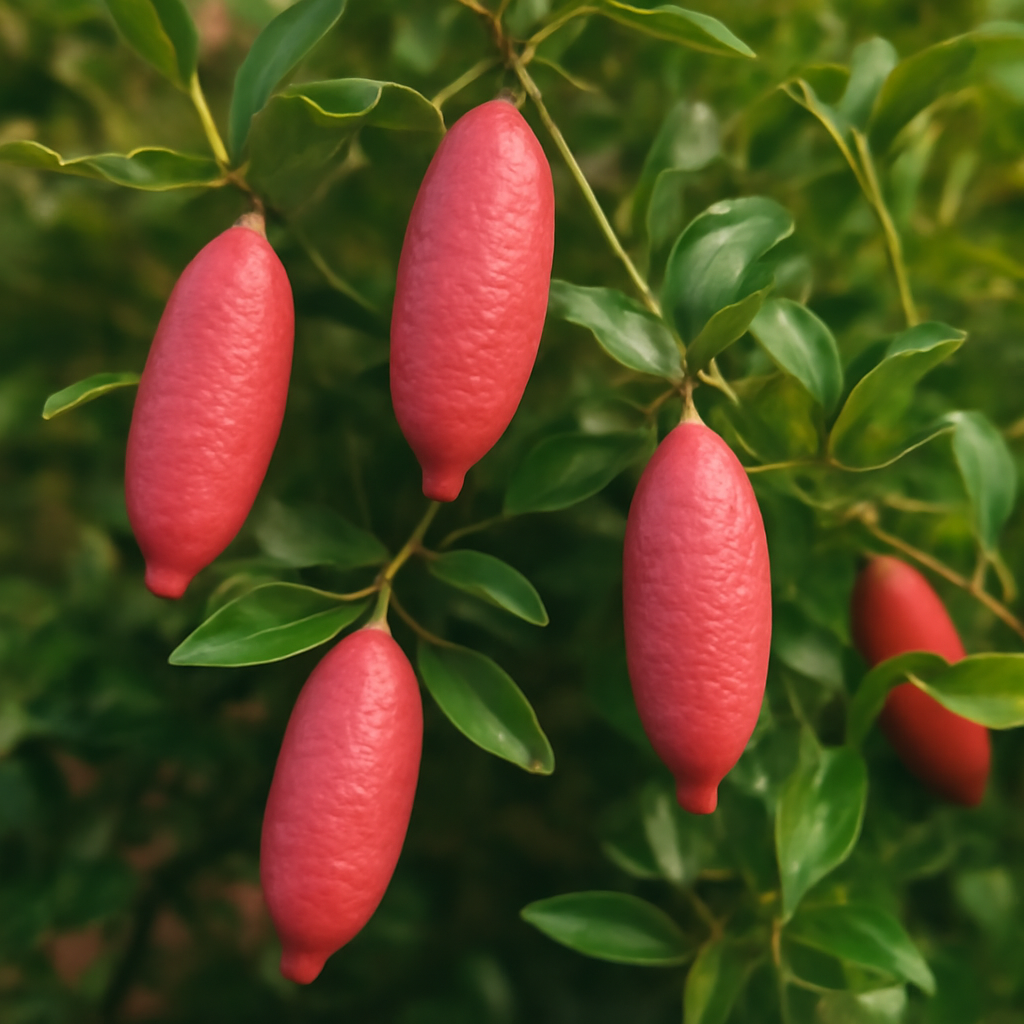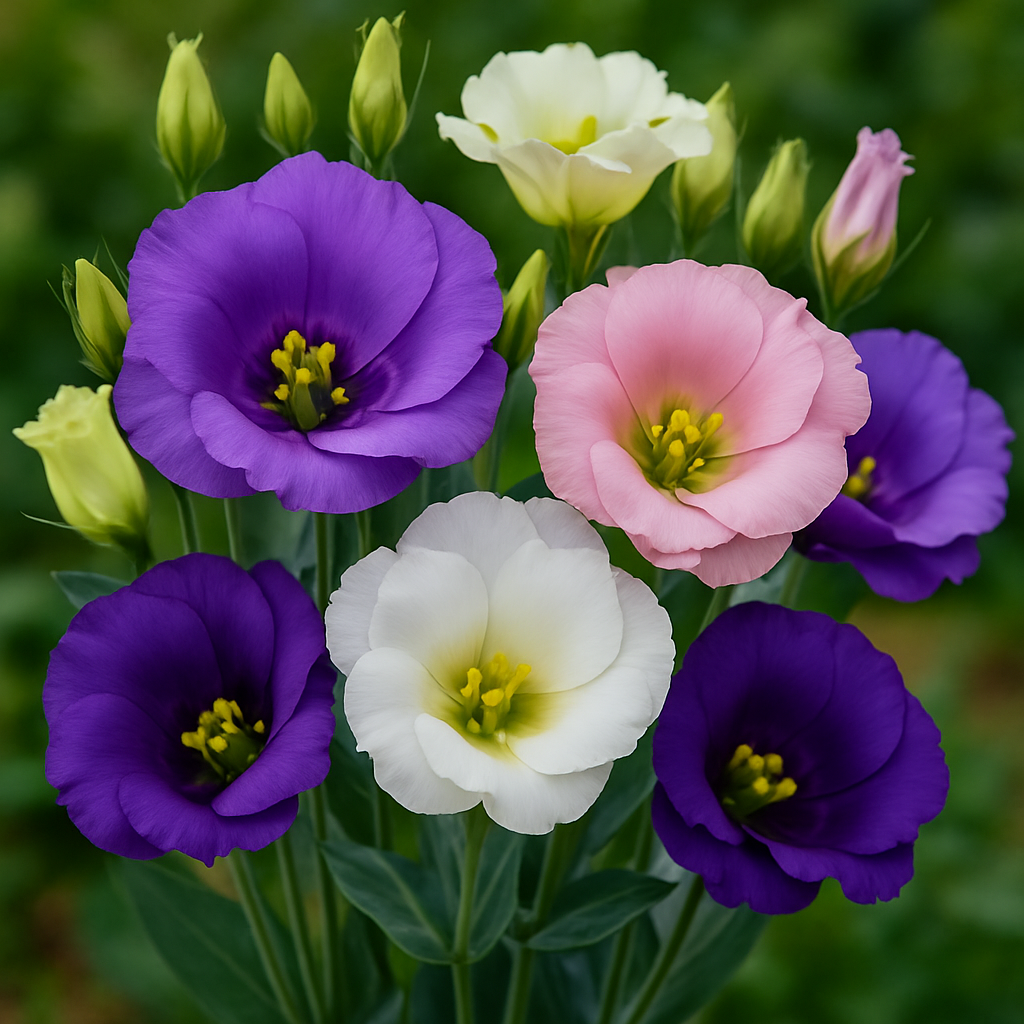Commiphora Wightii (Mirra Guggul): La Resina Antica con Benefici Moderni
Informazioni su Commiphora Wightii (Guggul Myrrh)
Commiphora Wightii, comunemente conosciuto come Guggul Myrrh o Guggul Indiano, è un piccolo albero spinoso originario delle regioni aride di India e Pakistan. È famoso soprattutto per la sua resina aromatica, il Guggul, che è stato usato per migliaia di anni nella medicina tradizionale per i suoi vari benefici per la salute. La resina gommo viene raccolta dalla corteccia dell'albero ed è utilizzata in diverse forme, tra cui polveri, capsule e oli.
Oltre ai suoi usi medicinali, Guggul ha un'importante importanza culturale nelle pratiche ayurvediche, dove è apprezzato per le sue proprietà antinfiammatorie, antiossidanti e antimicrobiche. Negli ultimi anni, la resina ha attirato l'attenzione per il suo ruolo nella gestione del peso, nella riduzione del colesterolo e nella salute delle articolazioni.

Perché Coltivare Commiphora Wightii (Mirra Guggul)?
Ci sono molte ragioni per coltivare Mirra Guggul (Commiphora Wightii) nel tuo giardino o nella tua fattoria:
-
Benefici Medicinali: Il Guggul è stato usato nella medicina ayurvedica per secoli per trattare vari disturbi, tra cui artrite, obesità, colesterolo e diabete.
-
Sostenibilità: Coltivare il proprio Guggul permette di produrre una fonte sostenibile di questa preziosa resina, sempre più richiesta.
-
Bassa Manutenzione: Commiphora Wightii è una pianta resistente che può crescere in condizioni di suolo povero, richiedendo poca cura una volta stabilita.
-
Significato Culturale: La resina di Mirra Guggul ha un significato culturale e religioso, particolarmente in India, dove viene usata in cerimonie e rituali.
Quando Piantare Commiphora Wightii (Mirra Guggul)
Commiphora Wightii (Mirra Guggul) prospera in climi secchi e caldi con piogge minime. È meglio piantarla in primavera o inizio estate quando le temperature sono costantemente calde. Il Guggul è una pianta tropicale-subtropicale, e preferisce temperature del suolo tra 75°F e 95°F (24°C a 35°C).
-
Avvio in casa: Nei climi più freddi, inizia i semi in casa 6-8 settimane prima dell'ultima gelata e trapiantali all'aperto una volta che il terreno si è riscaldato.
-
Semina diretta: Per climi più caldi, puoi seminare i semi direttamente nel terreno dopo che il rischio di gelate è passato.
Dove coltivare Commiphora Wightii (Guggul Myrrh)?
Guggul Myrrh cresce meglio in terreno ben drenato, sabbioso o limoso con un pH leggermente alcalino o neutro. È altamente tollerante alla siccità e può prosperare anche in terreno povero. Ecco come creare l'ambiente perfetto per questa pianta:
-
Luce solare: Il Guggul richiede pieno sole per crescere con successo, quindi piantalo in un luogo che riceva almeno 6-8 ore di luce solare diretta al giorno.
-
Terreno: Sebbene possa tollerare terreni secchi e poveri, aggiungere materia organica al terreno prima della semina aiuterà a migliorare la crescita delle radici e la salute generale della pianta.
-
Clima: Il Guggul è più adatto a climi tropicali e subtropicali. Se vivi in una regione più fredda, puoi coltivarlo in una serra o in vasi grandi che possono essere spostati all'interno durante i mesi più freddi.
Come coltivare Commiphora Wightii (Guggul Myrrh)
Coltivare Guggul Myrrh da semi o talee è relativamente semplice. Ecco una guida passo passo per aiutarti a iniziare:

-
Piantare i semi:
-
Immergi i semi di Guggul per 24-48 ore in acqua tiepida prima di piantare per migliorare la germinazione.
-
Semina i semi a circa 1/4 di pollice di profondità in un substrato ben drenato per la semina.
-
Mantieni il terreno umido e una temperatura di circa 75°F (24°C) per una germinazione ottimale.
-
-
Trapianto:
-
Una volta che le piantine sono abbastanza robuste e il rischio di gelate è passato, trapiantale in giardino o in un vaso più grande.
-
Distanza le piante di circa 4-6 piedi per dare loro spazio per crescere.
-
-
Preparazione del terreno:
-
Assicurati che il terreno dreni bene, poiché il Guggul Mirra non tollera condizioni di ristagno idrico. Usa un mix sabbioso e limoso per garantire un corretto drenaggio.
-
Come prendersi cura di Commiphora Wightii (Guggul Mirra)
Una cura adeguata è essenziale per favorire una crescita sana e la produzione di resina. Ecco alcuni consigli per curare la tua pianta di Guggul Mirra:
-
Irrigazione: il Guggul è tollerante alla siccità una volta stabilito. Annaffia in profondità, ma con poca frequenza, lasciando asciugare il terreno tra un'annaffiatura e l'altra. Evita l'eccesso di acqua, poiché può causare marciume radicale.
-
Concimazione: le piante di Guggul non richiedono una concimazione intensa. Tuttavia, applicare una leggera dose di concime organico una volta all'anno può favorire una crescita sana.
-
Potatura: pota la pianta periodicamente per mantenere la sua forma e rimuovere rami morti o danneggiati.
-
Controllo dei parassiti: il Guggul è generalmente resistente ai parassiti. Tuttavia, controlla occasionalmente la presenza di parassiti comuni come afidi o cocciniglie. Usa metodi biologici di controllo dei parassiti come olio di neem per gestirli.
Piante compagne per Commiphora Wightii (Guggul Mirra)
Commiphora Wightii (Guggul Mirra) si abbina bene con altre piante tolleranti alla siccità in contesti di xeriscaping o giardini a bassa manutenzione. Considera di piantare insieme a:
-
Aloe Vera: le foglie succulente dell'Aloe e i rami resiniferi del Guggul prosperano entrambi in ambienti secchi e soleggiati.
-
Cactus e Succulente: Queste piante condividono esigenze simili di terreno povero e ben drenato e acqua minima.
-
Lavanda: La lavanda prospera in terreno soleggiato e ben drenato e può completare la resina aromatica del Guggul con i suoi fiori profumati.
Raccolta di Commiphora Wightii (Mirra Guggul)
La resina di Commiphora Wightii (Mirra Guggul) viene raccolta facendo piccole incisioni nella corteccia dell'albero. La linfa esce da questi tagli e si indurisce in una sostanza simile alla gomma. Ecco come raccogliere la resina:

-
Incisioni: Usa un coltello affilato per fare piccoli tagli nella corteccia degli alberi maturi (di solito di 3-4 anni).
-
Raccogli la resina: La resina inizierà a fuoriuscire dai tagli e potrà essere raschiata una volta indurita. Raccogli la resina durante la stagione secca, quando la pianta produce più gomma.
-
Essiccazione: Una volta raccolta, lascia asciugare la resina all'aria in un'area ombreggiata prima di usarla nelle preparazioni erboristiche o per la distillazione di oli essenziali.
Considerazioni finali su Commiphora Wightii (Mirra Guggul)
Commiphora Wightii (Mirra Guggul) è una pianta eccezionale che offre sia benefici per la salute sia un'aggiunta unica al tuo giardino. Che tu la coltivi per le sue proprietà medicinali, la resina aromatica o la natura a bassa manutenzione, la Mirra Guggul è una pianta versatile e gratificante da coltivare. Per semi o piante di alta qualità di Mirra Guggul, visita Organicindiaseeds.com e inizia a coltivare oggi questa potente erba antica!



Commenta
Questo sito è protetto da hCaptcha e applica le Norme sulla privacy e i Termini di servizio di hCaptcha.